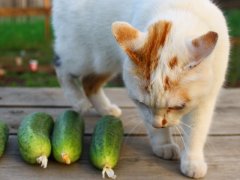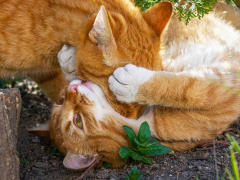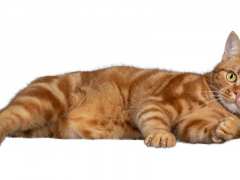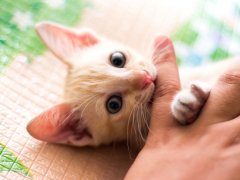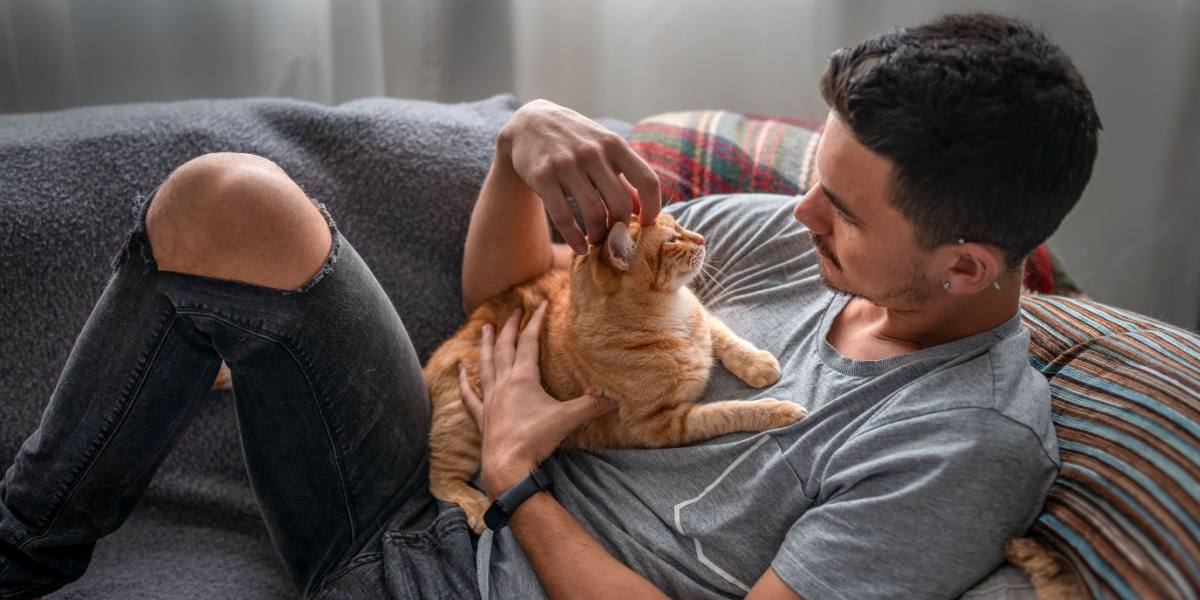
When we have a cat in our lives, we want to make sure they are happy and well cared for. Cats are known for their independent nature and how they are feeling might not always be obvious.
You try to give your cat the best life possible, but perhaps there are times when you can’t seem to figure out whether your cat seems happy. Read on to find out more about the signs of a happy cat and what you need to look out for.
1. Purring
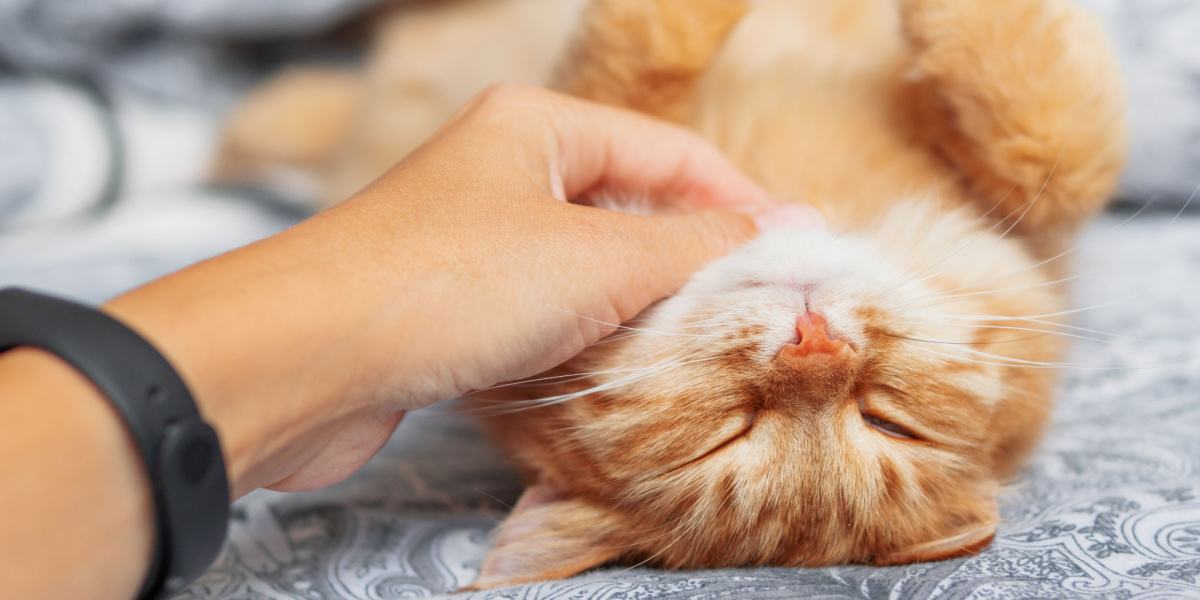
Most frequently, purring is a sign of a happy cat, especially if your cat looks relaxed while they are purring.
Cats can purr when they are relaxed and content. But, confusingly, they can also purr when they are unwell or in pain so the context is important. If they are purring while settled in a comfortable position with their eyes gently closed, then you can be pretty certain that you have one happy cat. You might hear them purring away when you stroke them or when they are basking in a warm patch of sunlight.
2. Kneading
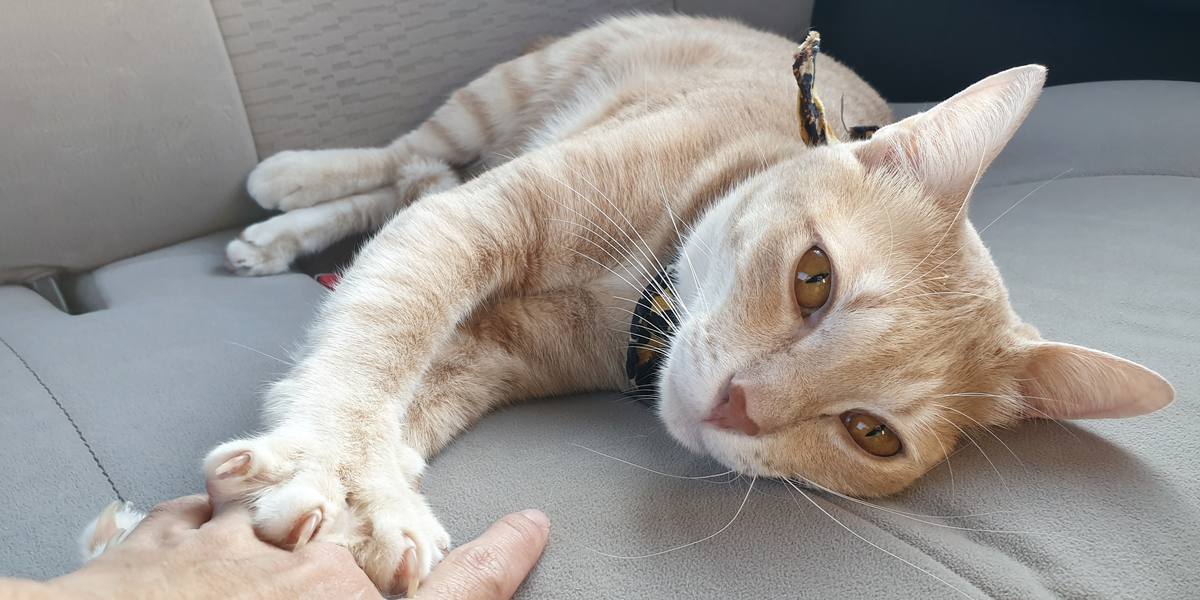
Cats often knead on soft surfaces or laps when they are feeling content.
Kneading, also known affectionately as “making biscuits,” is when a cat pushes rhythmically with alternating front paws against a person or an object while extending and retracting their claws. Seeing your cat do this is an adorable sight. They might also purr at the same time with their eyes half-closed.
This kneading motion is something they would have done as kittens to stimulate milk flow from their mother’s nipples. It is thought that they carry this behavior into adulthood and do so when they are in pleasurable situations.
3. Good Appetite
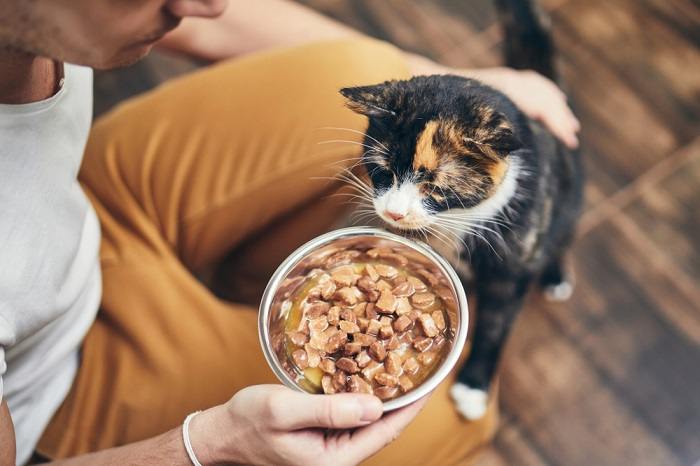
Eating well is almost always a sign of a happy cat.
A happy cat will have a good, healthy appetite. They will look forward to feeding time and might show their eager anticipation by meowing and rubbing against your legs as you prepare their food. Once you have set the bowl down in front of them, they will happily eat what you have offered them.
4. Consistent Sleeping Schedule
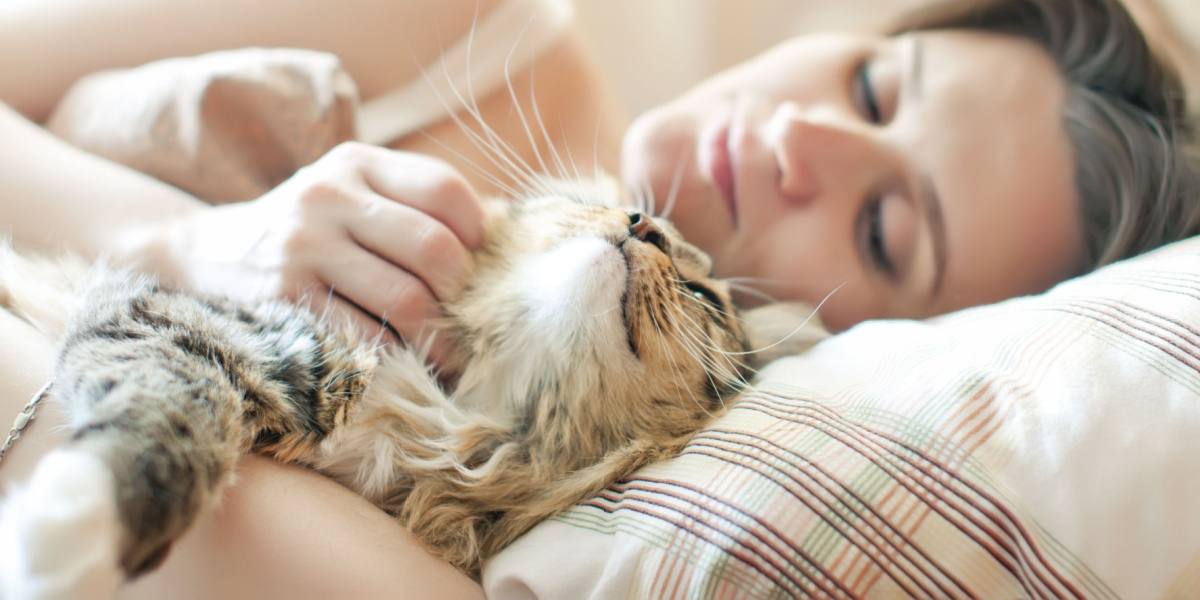
Happy cats sleep the right amount at the right times.
Cats are known for loving their naps. They can spend up to 20 hours a day sleeping and resting! If your cat is happy, they tend to stick to a consistent sleeping schedule. Look out for any changes.
5. Well-Kept Appearance
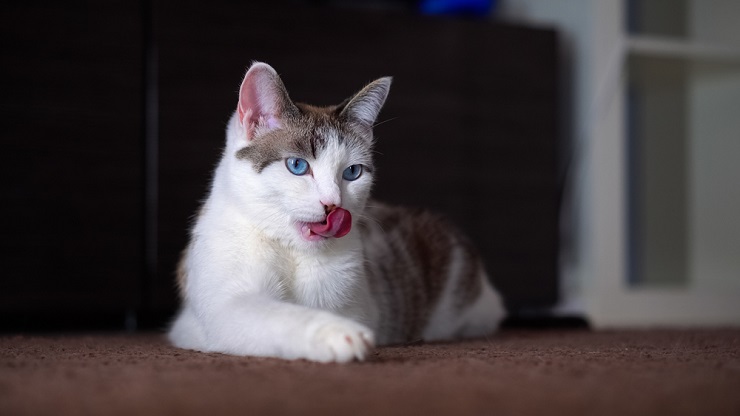
A clean, well-kept coat is a sign of a healthy, happy cat.
Not only do cats enjoy sleeping for many hours, but they can also spend 50% of their waking hours grooming themselves. Grooming is serious business so a happy cat will always make sure they keep themselves in tip-top condition. An unusually unkempt coat can be cause for concern and signal an underlying medical problem.
6. Normal Toileting Habits
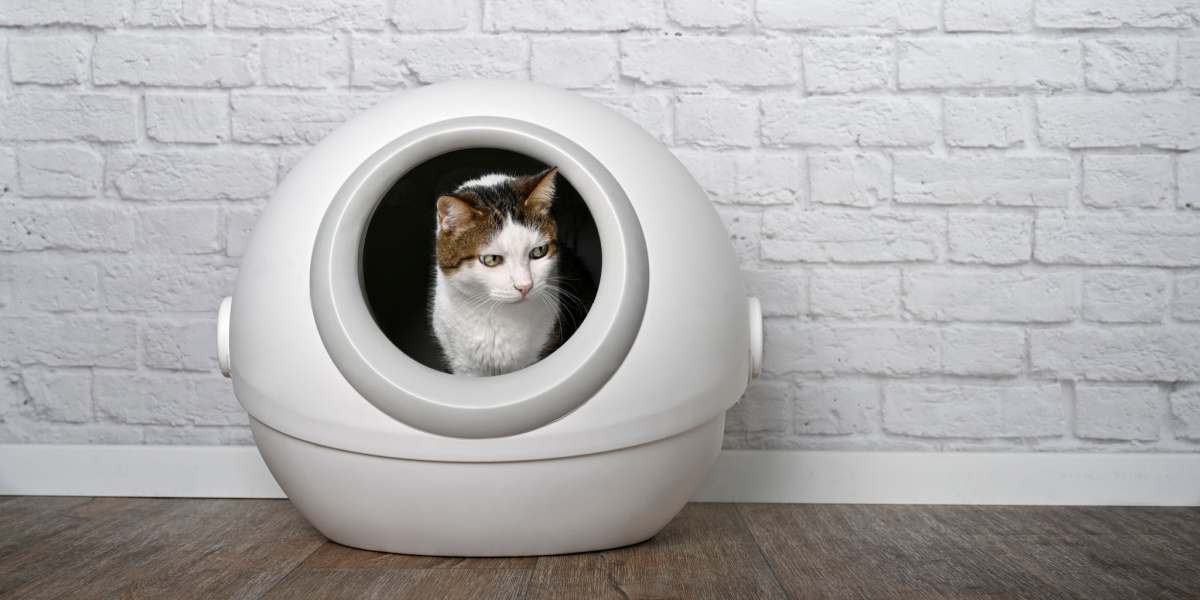
Cats instinctually want to use their litter box, so if they are going elsewhere it’s a sign there’s a problem.
A happy and content cat will use their litter box, as they are usually exceptionally clean animals. If your cat is unhappy or unwell, they might alert you by showing unusual toileting behaviors, like peeing or pooping around the house. Identify any potential sources of stress or anxiety, and look out for other signs of illness.
7. Wanting To Play
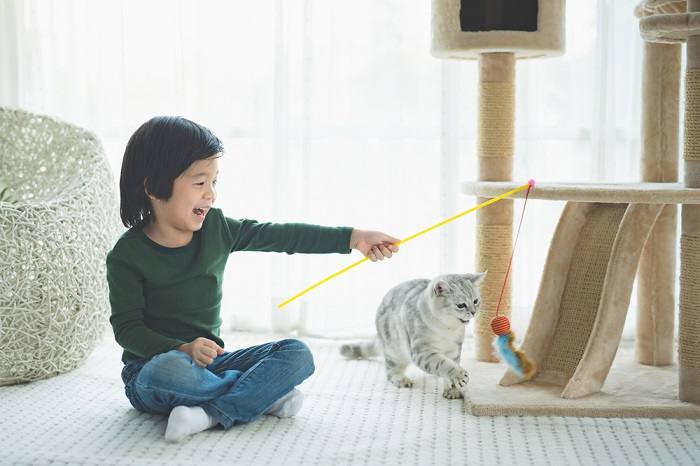
Although play drive varies amongst individual cats, most happy cats enjoy playing at least a little.
A playful cat is a happy cat. They might be content playing on their own, batting, and pouncing on toys. Or they might need you to entice them with something interactive, like a wand toy. Playing is a great way for them to use their energy and reinforce the bond they have with you.
8. Showing Curiosity
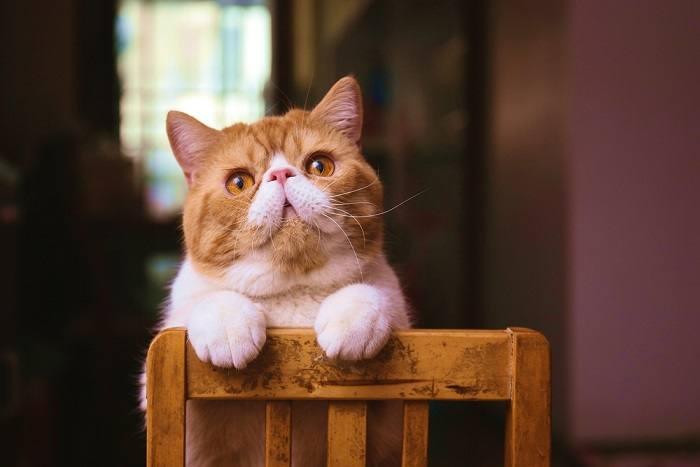
Cats that are unhappy for any reason won’t usually take much interest in their surroundings.
A happy cat might show signs of curiosity and an interest in what is going around them. If your cat appears engaged with their surroundings, then that is a good sign.
9. Slow Blinking
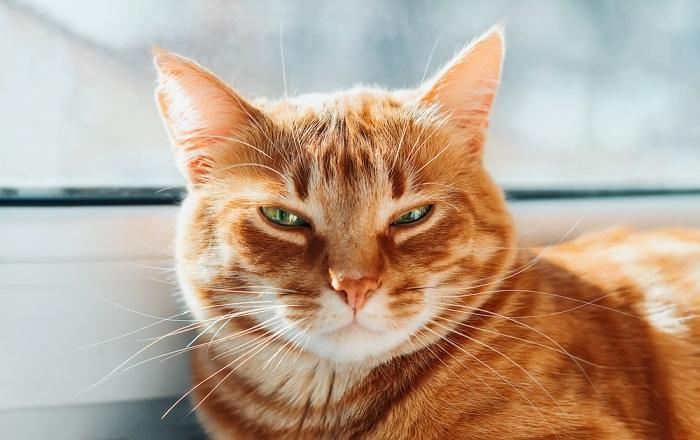
Slow blinks are a cat’s way of communicating their happiness with your bond.
You might have noticed your cat making direct eye contact with you and slowly blinking. This can be a sign of friendliness and an indicator of positive emotions. If they are also purring and have a relaxed posture, then they are conveying their contentment.
10. Relaxed Body Language
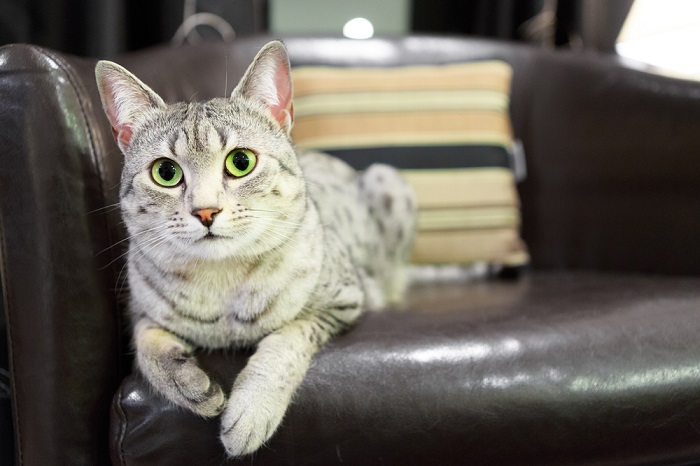
Happy cats usually look relaxed as opposed to unhappy cats, which might look tense.
Learning to interpret your cat’s body language is a great way to find out whether they are in a good mood. If a cat is happy, they might stand with a relaxed posture or lie down and stretch out comfortably.
Their tail might be held upright with the tail tip curved, like a question mark. Their eyes might be gently closed and their ears in a neutral position, pointing up and facing forward.
11. Social Roll
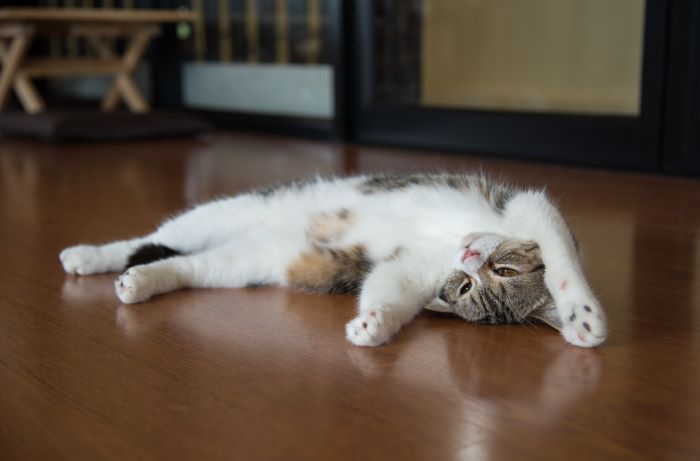
Rolling on their back and showing their belly is something cats only do when feeling very content and secure.
Has your cat ever come up to you and suddenly rolled onto their back? This is a way for them to show their happiness and affection, and can also be a playful behavior. The belly is a vulnerable area so it takes trust for a cat to expose theirs. Bear in mind that it is not always an invitation for you to give them a belly rub, so a stroke of the head or a scratch behind the ears may be better options.
12. Seeking Your Company
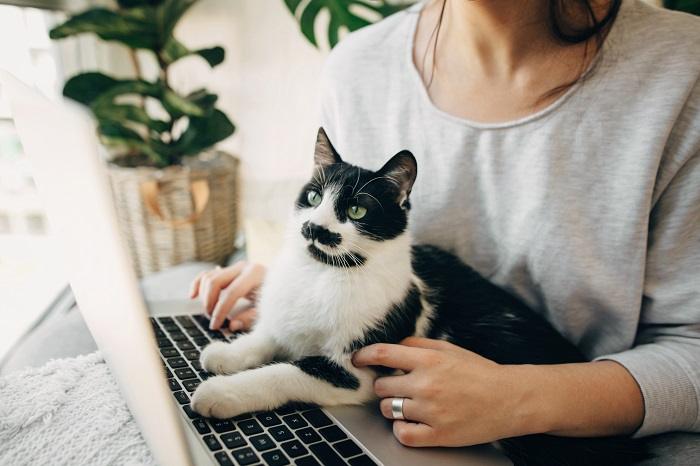
Some cats like to be nearby without touching while others enjoy physical contact.
Depending on your cat’s personality, they might seek out your company and want interaction with you when they are feeling happy. This might come in the form of coming to greet you with meows and an upright tail that is curved at the tip. Or jumping onto the sofa for cuddles. Head-butting you is also a great way to get your attention.
Happy Cats: Final Thoughts
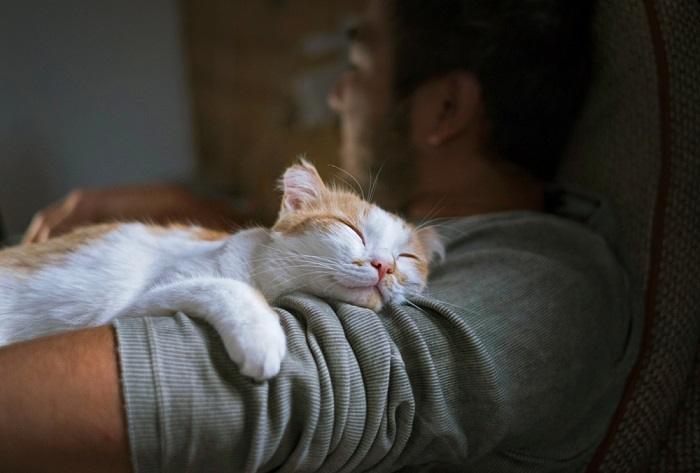
The better you understand your cat, the closer your bond will be.
Now, you should feel more comfortable with assessing the happiness levels of your cat. Your cat’s body language, vocalizations, and behaviors give you lots of information and indicators, though they can be subtle.
By having a better understanding of them, you allow yourself to become much more attuned to your cat’s emotions so that you can recognize when something might be wrong sooner rather than later.
Also Read: 5 Reasons Why Cats Like Shoes So Much
-
Atkinson, T. (2018). Practical Feline Behaviour. Oxfordshire, UK: CAB International.
-
Humphrey, T., Proops, L., Forman, J., Spooner, R., & McComb, K. (2020). The role of Cat Eye narrowing movements in Cat–Human Communication. Scientific Reports, 10(1). https://doi.org/10.1038/s41598-020-73426-0.
